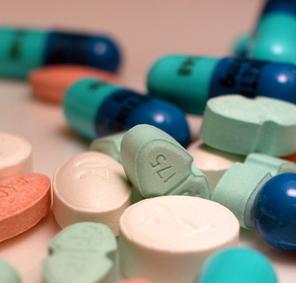
Under the background of the two major high-pressure policies of tender price limit and medical insurance control fee, the growth rate of the pharmaceutical industry has slowed down significantly. The industry believes that the pharmaceutical sector is still under policy suppression in the short term, but from the mid- to long-term perspective, the overall development trend of the pharmaceutical industry is upward.
Slower growth of the industry According to calculations of the Guotai Junan Medical team, the growth rate of the pharmaceutical industry slowed down significantly in the first quarter of 2014, with an average income growth rate of 13.7%, which may be the lowest point of the year. This was mainly due to the slowdown in the growth of medical insurance expenditure after the medical insurance control fee, which slowed down the growth of the industry.
From the sub-industry point of view, the slowdown in the growth rate of Chinese patent medicines is the most obvious, mainly because the recent wave of price cuts has affected downstream customers' stocking. From the perspective of the revenue of each Chinese medicine company in the first quarter, the average growth rate was 13.83%. However, exclusive brands such as Tong Ren Tang and Yunnan Baiyao were less affected due to their strong price protection capabilities.
Chemicals companies are gradually coming out of the doldrums, and high-end specialty pharmaceutical companies are growing steadily. Chemicals companies grew 12.72% in revenue in the first quarter, and the profit growth rate was 18.82%. In 2013, the chemical preparation industry was heavily affected by GSK bribery. From September 2013, the income growth of the industry began to slow down from 20% in January-August 2013 to 3% in January-February 2014. At present, the industry has gradually emerged from the shadows, and the growth of high-end specialty medicines is driving the improvement of overall industry profits.
With regard to medical devices, the profit growth rate has dropped, and the industry has integrated the survival of the fittest. The industry's profit growth in the first quarter was only 5.31%, down 3.7% year-on-year, and the export situation was not yet clear. Competition in the low-barrier varieties was fierce and profitability declined. The pace of industry consolidation has accelerated since 2012, and the degree of concentration in the subdivided areas has increased. In March this year, the CFDA announced the revision of the new version of the Regulations on Medical Device Supervision. The new regulations will be implemented starting from June 1. Overall, innovation will be encouraged, which will stimulate the R&D of enterprises, increase the output rate of new products, and accelerate the growth of the industry.
The export of chemical raw material medicines is still in a downturn, and the pressure of environmental protection has allowed companies to “stress the mountainâ€. In the first quarter, the growth rate of industry revenue was 11.32%, a year-on-year decrease of 8.65%. Affected by the inventory cycle and product prices, the growth rate of the industry is still fluctuating. Large bulk pharmaceutical companies are also facing unprecedented environmental pressures. Coupled with product price cuts, corporate gross margins tend to decline.
From the financial data disclosed by the company, the operating cash flow of pharmaceutical listed companies in the first quarter is at the lowest level in the same period in the past five years.
The differentiation in the development of pharmaceutical listed companies is also intensifying. Among the 179 listed pharmaceutical companies, the proportion of companies with non-net profit growth rate greater than 20% decreased from 72% in 2009 to 40% in the first quarter of this year; the proportion of companies with non-net profit growth rate greater than 50% accounted for In 2009, 42% fell to 16% in the first quarter of this year.
In the second half of the year, Ding Dan, an analyst with Guotai Junan Pharmaceutical Co., Ltd., said that under the circumstances that the overall growth rate of the industry has slowed down significantly, it is possible to invest along the three lines of thinking in the second half of 2014. First, it is optimistic about high-boom segments, such as formula pellets, Companies in the fields of hospital construction and reproductive medicine; Second, reform of beneficiary policies, low-cost medicines and companies promoted through tendering; and third, changes in the company's own endogenous extensions, such as marketing reforms, pending share reforms, approval of new drugs, or listing of new drugs And other companies.
Some of Guotai Junan's views were echoed by the Haitong Securities medical team. Haitong Securities believes that most pharmaceutical companies are now in a low-growth state. In order to get rid of the low-growth predicament, they need to step in new areas. The development of new products and outreach M&A are the two most important paths. It is undoubtedly the most attractive to enter new areas such as medical services through innovative development of new products; however, although M&A can solve the problem of short-term profit growth, it is difficult to predict the sustainability of the latter part.
In terms of innovative drugs, Haitong Securities believes that in addition to the patented drugs and biopharmaceuticals that have received much attention in the past, new formats such as gene sequencing, mobile medical care, and online pharmacies continue to emerge. Although most of these fields are still in the subject speculation stage, However, it is undeniable that the industry trend has been formed, the business model is gradually maturing, and the huge space brought by technological progress makes people see new hope.
Shaoxing Gangfeng Hospital Products Co.,Ltd. , https://www.gangfenggauze.com